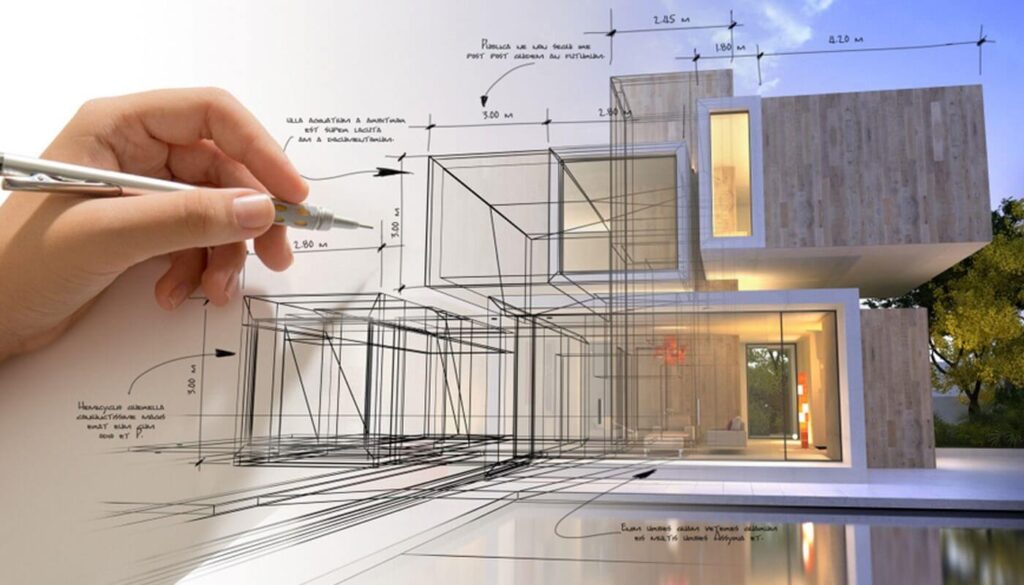An Extensive Overview of Building Styles and Their Influence on Modern City Planning and Development
Architectural styles have long worked as a mirror to the societal values and technological developments of their time, playing a critical duty fit modern-day city preparation and growth. From the majesty of Neoclassicism to the practical strategy of Brutalism, each design has actually presented special ideas that influence urban aesthetic appeals and performance. As contemporary challenges occur, including sustainability and community needs, comprehending these historical structures comes to be crucial. The resulting discussion not only informs future design techniques yet likewise raises relevant questions concerning the equilibrium between heritage and innovation in our advancing city landscapes.
Historical Introduction of Building Designs

As cultures transitioned through the Center Ages, Gothic style arised, defined by its verticality and elaborate detailing, matching the spiritual ambitions of the era. The Renaissance noted a rebirth of classic ideals, combining art and design in innovative manner ins which affected subsequent designs throughout Europe.

Today, architectural styles remain to advance, driven by globalization and sustainability issues, mirroring a dynamic interplay in between heritage and advancement. This historic review underscores the relevance of style as a mirror of societal development and as a stimulant for city development.
Secret Architectural Styles Explained
The variety of building designs reflects the myriad influences that shape our developed setting, each personifying distinct qualities and social values. Trick building designs include Classical, Gothic, Baroque, Modernism, and Postmodernism, each representing special historic contexts and visual approaches.
Timeless style, rooted in old Greece and Rome, stresses proportion, percentage, and the use of columns (cda architects). In contrast, Gothic architecture, thriving in the center Ages, is characterized by pointed arches, ribbed vaults, and flying buttresses, creating a heavenly high quality in basilicas. Baroque architecture, emerging in the 17th century, is marked by grandeur, elaborate ornamentation, and a vibrant interaction of light and darkness
Modernism, which acquired momentum in the early 20th century, focuses on feature over kind, utilizing brand-new products like steel and glass to create minimal frameworks. Postmodernism, reacting against the austerity of Modernism, embraces eclecticism and historical recommendation, commonly incorporating spirited components and paradox.

Influence On Urban Preparation
Fit the growth of cities, architectural designs considerably affect urban preparation decisions. The option of building style usually dictates the aesthetics, performance, and total character of city environments. As an example, innovation, with its focus check this on minimalism and capability, motivates open rooms and the integration of innovation, forming city layouts that prioritize performance and accessibility. Alternatively, traditional styles may stress historic conservation, resulting in metropolitan styles that keep social heritage and advertise pedestrian-friendly environments.
Additionally, architectural styles can impact zoning policies and land use policies. Urban planners must consider the prevailing building fads when making areas, making certain that brand-new developments integrate with existing frameworks. This consideration promotes natural city landscapes and improves community identity.
The execution of particular building styles can also affect socioeconomic aspects within a city. For instance, premium contemporary styles might draw in upscale homeowners and organizations, bring about gentrification, while extra cost effective housing remedies may focus on functional and lasting layouts to accommodate diverse populations. Eventually, the interaction between architectural styles and city planning develops dynamic cities that mirror both historic context and modern needs, shaping the lived experiences of their occupants
Sustainability and Modern Style
Building designs play a critical function in addressing modern difficulties, specifically in the world of sustainability. As urban areas broaden and environmental problems intensify, modern architecture progressively welcomes lasting style concepts that prioritize energy effectiveness, resource conservation, and minimal environmental impact.
Contemporary building activities, such as biophilic style and eco-friendly style, supporter for frameworks that harmonize with their surroundings, using all-natural products and promoting biodiversity. These designs commonly incorporate renewable energy resources, such as solar panels and wind turbines, to reduce dependence on fossil fuels and lower carbon impacts.
In addition, the combination of advanced innovations, such as smart structure systems, enhances energy administration, optimizing resource use while making sure occupant comfort. Innovative water management methods, including rain harvesting and greywater recycling, further add to sustainable city atmospheres.
Notably, sustainability prolongs beyond ecological issues; it encompasses social and financial measurements too. By cultivating neighborhood wellness and promoting inclusivity, contemporary architectural styles line up with sustainable growth objectives. Consequently, the evolution of architectural practices continues to form resistant cities that not only satisfy the needs of the present yet additionally secure the future for generations to find.
Neighborhood Interaction in Design
Area interaction in design acts as an essential bridge in between designers find more information and the populations they offer, making sure that the built setting reflects the demands and ambitions of its users. This joint process welcomes community participants to contribute their understandings and preferences, fostering a feeling of ownership and obligation towards the areas they inhabit.
Efficient community engagement utilizes various techniques, such as workshops, studies, and public online forums, to gather varied perspectives. These strategies assist in a two-way discussion, enabling architects to comprehend local contexts while equipping residents to voice their worries and needs. This inclusivity not only boosts the design high quality yet also advertises social equity by dealing with the special More hints challenges faced by marginalized teams.
In addition, community interaction can bring about innovative services that may not arise in a traditional style procedure. By incorporating local understanding and social worths, engineers can develop spaces that resonate more deeply with individuals, boosting use and sustainability. Ultimately, prioritizing neighborhood interaction in style procedures results in atmospheres that nurture social communications, assistance wellness, and enhance area connections, therefore playing a pivotal role fit modern metropolitan landscapes.
Verdict
Architectural designs have actually profoundly affected modern-day city planning and development, mirroring developing cultural and technical contexts. As cities continue to expand and adjust, the ongoing discussion between building heritage and contemporary design concepts will continue to be important in creating comprehensive, dynamic rooms that improve quality of life and advertise social equity.